Article from the section "Gardener's Calendar"
This article describes in detail the work that awaits summer residents in March. For the convenience of readers, we will deal with the concerns of gardeners, gardeners and flower growers separately
- Gardeners' work in March
- Works of gardeners in March
- Flower growers' work in March
The first March visit to the dacha begins, of course, with a careful inspection of the garden: how the trees and shrubs have overwintered.To control, cut off several branches (if you haven’t done this before) and keep them in the cold for two days. Then place it in a container of water and place it in a warm room.
Watch the buds open. If you cut the bud lengthwise and notice light green tissue, then everything is fine.
What work is done in the garden in March
Your garden: work of the month
A cut from an old branch will tell you the degree of freezing of the wood: the darker it is, the more damaged the tree is.
Perform March tree pruning
Get ready to trim trees. Sharpen secateurs, knives, hacksaws, check the stairs, stock up on garden varnish. Start pruning trees when temperatures reach at least 5 degrees.
Cover the sections with a thin, even layer of varnish. Don't leave stumps. Do not make large wounds at the same level. Cut out large branches in sections.
If a hollow has formed on the trunk, clean it of debris, clean it with a chisel, fill it with crushed bricks and fill it with cement mortar.
Wounds on the trunk and skeletal branches (damage from frost, lesions of black cancer, etc.) clean with a knife to healthy tissue, disinfect with a solution of copper sulfate (30 g per 1 liter of water), cover with garden varnish or rannet paste, which contains heteroauxin - wound healing agent.
If the ends of the branches are frozen, trim them back to healthy wood. Cut severely frozen branches to a ring-shaped influx at the base.
If there is severe freezing, do not rush with pruning, wait until the buds fully open and the shoots begin to grow. Sometimes this work is postponed until early summer next year.
Carry out sanitary pruning of trees: remove broken, dry, diseased branches to healthy wood.Cover the wounds with garden varnish or rannet paste. Without coating, wounds with a diameter of less than 2 cm can be left.
Systematically prune young, strong trees: reduce the crown, thin it out, remove sagging branches.
Treat tree bark
If the bark of young trees (up to 5 years old) is damaged by rodents, treat them. Cover large wounds with garden varnish without cleaning the edges.
Later in April, you can determine whether the cambium (the greenish layer between the bark and the wood) is still intact by making a small T-shaped cut in the damaged area. If the remaining part of the bark easily comes away from the wood, everything is in order, the wound will heal. Tie it on top with film, but make sure it doesn’t cut into the bark.
Large wounds with dead cambium or circular wounds are very dangerous for the tree. It can only be saved by grafting with a bridge when active sap flow begins. But in March, cut healthy annual branches of winter-hardy varieties and store them in the cold until grafting.
Minor, superficial damage to the bark may not be treated: it will heal due to the remaining cambium.
Carry out work on propagating shrubs
You can cut currant cuttings and place them in a vessel with water (the tap water should be allowed to settle). When roots form, plant the cuttings in a container with fertile soil. When the soil in the garden warms up, transplant them to a permanent location. By autumn a good bush will grow.
Bring the berry seeds, planted for stratification, into a cool room (temperature plus 10 degrees). After 3-4 weeks, plant them in a school in the garden.
Before the arrival of the feathered defenders of the garden, clean and repair old bird houses and hang new ones.
Place poisoned mouse baits in your shed or garden house.You can buy them at the store or make them yourself from one part cement, one part sugar and two parts flour. Pour the mixture into saucers, add a few drops of unrefined (fragrant) sunflower oil.
March garden pest control
At the end of the month, when the average daily temperature is not lower than plus 5 degrees, you can carry out early spring spraying of trees and berry bushes with N30 (500 and 200 g per 10 liters of water, respectively) to destroy the wintering stages of pests.
This drug is used once every 2-3 years. At intervals, you can spray the plants with iron sulfate (500 g) or urea (500 g), or the first spraying can be done later, in the “green cone” phase.
When trees freeze, the bark is severely affected by cytosporosis: thin branches dry out, wounds or red-brown dents form on the trunks. The bark gets wet, black tubercles (with spores inside) appear on it. When it gets warmer, the spores fly away and infect weakened trees.
Trim and trim thin branches, clean the wounds, disinfect, cover with garden varnish or a mixture of clay and mullein (1:1) and bandage with a soft cloth.
Don't forget the bushes
At the end of March, before the buds on currants and gooseberries swell, rake and destroy fallen leaves, cut out dry branches and shoots damaged by diseases and pests, and destroy them. Remove swollen currant buds that are infested with mites. If there are many such buds, remove the branches completely.
Before the strawberry leaves begin to grow after the snow melts, clear the plantation of dry leaves and other plant debris and burn them.To destroy fungal infections (powdery mildew, gray rot, etc.) in warm weather (at least plus 5 degrees), spray the area with N30 (200 g per 10 liters of water) or Bordeaux mixture (300 g copper sulfate + 400 g quicklime per 10 liters of water).
What work do gardeners do in March?
Vegetable garden at the start: work of the month.
Even weather forecasters cannot predict with a guarantee whether spring will be early or whether it will bring late warmth. But we must prepare for spring in March without delay.
Those who are already traveling to their dachas can disinfect glass greenhouses with a 10% solution of caustic soda at above-zero temperatures.
There are already things to do in the garden
In March, it is already possible to cover the beds with winter crops and the beds on which we are going to sow early vegetables with film on the arches
- salad
- spinach
- radish
- Chinese cabbage
- carrot
- dill, etc.
If possible, you can prepare a warmer area for planting potatoes in the same way. You can also cover beds with perennial onions, asparagus, and rhubarb so that the soil warms up faster and the vegetables produce an earlier harvest of the first vitamins.
Make a greenhouse for seedlings
In March, many summer residents set up solar-heated greenhouses for growing seedlings in order to spend less time fiddling with them on the windowsills. In a sunny place we make a wooden box, the northern wall of which is 15 cm higher than the southern one, cover the top with glass or cover it with film.
The slope is needed for better solar heating of the greenhouse and for water drainage. To build a greenhouse, you can use an old window frame and make a wooden frame to fit it. On the bottom lintel of the frame, several grooves are made, as deep as the glass, to drain water.
If spring is early, you can sow tomatoes with dry seeds in such a greenhouse at the end of March - beginning of April. At first, such a greenhouse is additionally covered with a second layer of film or non-woven material. In case of a sudden cold snap, you need to have a warm shelter (an old blanket, for example).
The main work takes place on the windowsill
And yet, in March, the main garden work is concentrated on the windowsill. The yield of the beds largely depends on what our seedlings will be like by the time they are planted in open ground.
Prepare the soil for seedlings in advance
To sow seedlings, you can use soil mixtures prepared with your own hands from turf, leaf, humus soil, peat, and sand. If you are used to growing seedlings on purchased soil, there is nothing wrong with that either. But it is better to buy soils that have already been tested in previous years.
Take care of your seedling boxes
It is also difficult to advise which seedling containers to use. These can be specially knocked together wooden boxes (in which the roots of the seedlings do not overheat or cool too much), plastic containers, cassette blocks.
Some summer residents have gotten used to sowing vegetables in peat tablets, others use plastic cups. The choice depends on the desire (or reluctance) to engage in picking later, on the “usable area” of the window sills and the number of seedlings being grown.
The more seedlings you plan to grow and the fewer well-lit window sills in the apartment, the more compact the seedling containers will have to be placed.
If there is not enough space, at first it is better to grow seedlings in boxes or small cassettes.Later, part of the seedlings (for example, cabbage) can be transported to the dacha: planted in the soil of a greenhouse or in cups.
Preparing to sow seeds
If we are going to grow vegetables in open beds, we sow eggplants and peppers for seedlings in the middle, and tomatoes at the end of March. For unheated greenhouses, we begin work two weeks earlier.
Wash all containers that were used last year with soap. Wooden boxes and ceramic pots can be doused with boiling water and then dried. Place a drainage layer (1-2 cm) on the bottom of the seedling containers.
In seedling boxes it can be just a layer of sand, and in cups it can be expanded clay, shards of pots, pieces of coal. Then add soil mixture. To make it settle better (without voids), shake the containers, and then compact the soil along the walls and corners of the containers with your hands.
After compaction and watering, the soil surface should be 1.5 cm below the edge of the container. We install seedling containers near heating radiators or on a sunny windowsill to sow seeds in warm soil.
Let's start sowing
The depth of seed placement depends on their size. The larger the seeds, the deeper they are planted and vice versa. Pepper seeds are planted at 1.5 cm, and tomatoes and eggplants at 1 cm.
Sow the seeds in moist soil, after sowing the soil surface is slightly compacted, covered with glass or film and kept in a warm place until seedlings emerge: 23-25 degrees for tomatoes, 26-28 for peppers and eggplants.
Caring for seedlings in March
As soon as the loops of the first shoots appear, the seedling containers are moved to the brightest place so that the shoots do not stretch out, and for 4-7 days the temperature is reduced to 12-15 degrees for tomatoes and to 18 degrees for peppers and eggplants.
This can be done by opening the window slightly, but so that cold air does not directly hit the plants. Especially cold drafts are dangerous for eggplants.
A cool microclimate is necessary for the formation of a good root system. Later, the optimal temperature for seedlings of nightshade crops is considered to be within 20-25 degrees.
It is not possible to create the microclimate it needs on the windowsill for each crop. The main thing is that the seedlings are well lit, not over-watered, but also not allow the soil to dry out. The night temperature for seedlings should be several degrees lower than the daytime temperature.
If there are no heating radiators under the window sill where the seedlings are growing, then even without our help it will be colder at the window at night than during the day. But more often the heating radiators are located just under the windows. Then it is better to hang the batteries tightly at night or move the seedling boxes to the floor.
At the stage of three to four true leaves, seedlings of nightshade crops, which are grown without picking, are fed (1 g of urea and potassium sulfate, 10 g of superphosphate per liter of water).
Complex fertilizers with a predominance of phosphorus can also be used for feeding. We begin to feed the rest of the seedlings no earlier than two weeks after picking.
Expanding the range of greens
At the beginning of March, it is not too late to sow early varieties of cabbage (white cabbage, cauliflower, broccoli, Chinese cabbage, Brussels sprouts, kohlrabi), root and petiole celery, chives, potato seeds (to obtain seed tubers for the next season).
To speed up the development of cabbage seedlings, we will grow them without picking.
- Fill the cups with a mixture of turf, humus soil and sand, water and sow the seeds to a depth of 1 cm.
- Place the cups in a tray, cover with film and place in a warm place (18-20 degrees) until shoots appear.
- The first shoots are a signal for us: the cups need to find a cool (8-10 degrees) place.
- After a week, we create a warmer (but not hot!) microclimate for the seedlings: during the day about 15 degrees, at night, naturally, five degrees lower.
- To protect seedlings from blackleg, water the soil with a pink solution of potassium permanganate.
- 45 days after sowing (mid-April), the seedlings will be ready for planting in the beds.
Picking up seedlings sown in February
We plant cabbage seedlings sown in February in separate cups at the stage of one true leaf, deepening them down to the cotyledon leaves when planting.
At the stage of one or two true leaves, we pick up the root and petiole celery sown in February. It is better to provide each plant with a separate living space - a small glass or cassette.
If there is no time for picking, we will definitely thin out the seedlings: already in the seedling period, the plants are “programmed” for the harvest and cramped conditions do not stimulate them to high productivity.
In addition, thickened plants very often die from fungal diseases.
It wouldn’t be a bad idea to sow parsley in March.
Let's find several cups or cassettes to sow parsley seeds. In March, it is not yet clear how the parsley survived the winter cold. In addition, the parsley could get wet, or it could be “undermined” by mice. And without parsley, it’s somehow sad in the spring at the dacha.
Having sowed parsley for seedlings in March, at the end of April we can plant it in open ground after hardening and will soon be picking off the green leaves.
In the same way and for the same purpose, you can grow some seedlings of leaf celery. The root and petiole varieties, the seedlings of which are already turning green on the windowsill, will yield a harvest only late in the fall, while the leaf varieties will add flavor and aroma to country dishes all summer long.
What other greens are sown in March?
In March, you can sow seedlings and other greens:
- marjoram
- oregano
- tarragon
- thyme
- lemon balm
- peppermint
We won’t rush to sow our favorite basil: during the seedling period, it often dies from fungal diseases or stretches out. We will sow it in a bowl in April or directly into a garden bed, but already in May.
Seedling salad will also delight you with early greens. In cassettes and cups on the windowsill it looks somewhat “disheveled”, but when planted in a garden bed it quickly transforms.
By May, when the lettuce sown immediately into the garden bed is just starting to appear, the seedlings can already be cut. It is both juicy and tasty because it grows in cool weather.
What to do if the seedlings begin to stretch?
Let's start by analyzing our agricultural technology and the conditions in the room.
Plants grow “leggy” with a lack of light and excess heat.
- We will try to reduce the temperature with more frequent ventilation and cover the radiators.
- To increase the lighting intensity, it is not necessary to install phytolamps. It may be enough to wash the window glass, install reflective screens behind the seedling boxes (glue or wrap the cardboard with foil), plant the seedlings more spaciously, or simply arrange cups with seedlings.
- We will also water the seedlings more moderately: only after the top layer of soil has dried.
After March 10, we begin to germinate potato seed tubers for April planting.
We lay out carefully selected (without any stains) tubers in a cool, bright room: in such a microclimate, the eyes grow strong and do not stretch out. The tubers themselves become healthier in the light, acquiring resistance to diseases.
Regularly checking potatoes, we discard tubers with thin sprouts: there is a high probability that they are infected with viruses.
Flower growers' work in March
Your flower garden: work of the month.
To read the article, go to the next page using this link: what kind of work awaits flower growers in March
Other articles in this series:
- Works of gardeners and vegetable gardeners in April
- Works of gardeners and vegetable gardeners in May
- Works of gardeners and vegetable gardeners in June
- Works of gardeners and vegetable gardeners in July
- Works of gardeners and vegetable gardeners in August
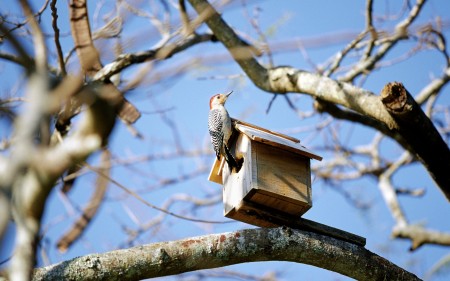
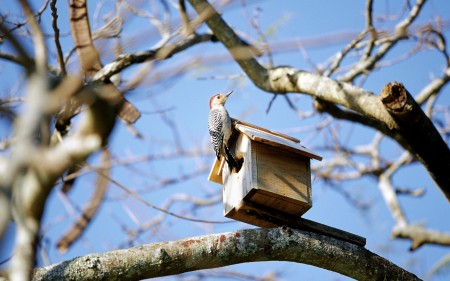
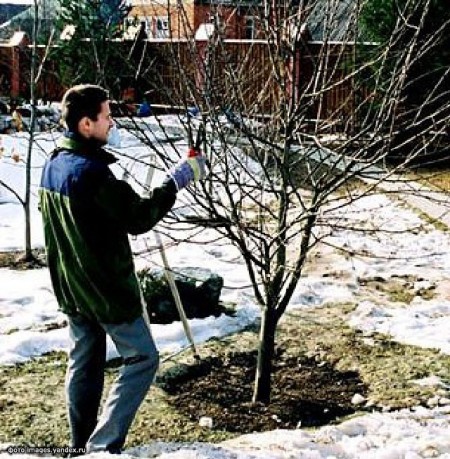
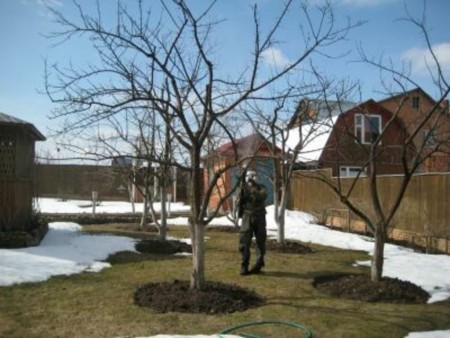

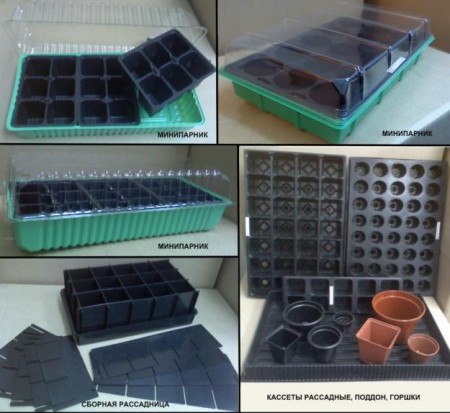
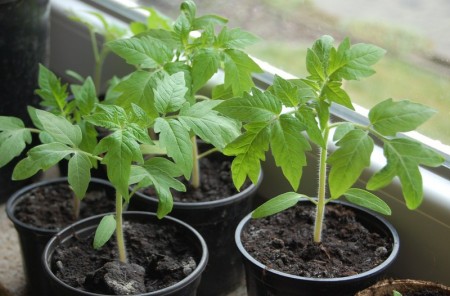

 (17 ratings, average: 4,65 out of 5)
(17 ratings, average: 4,65 out of 5) CUCUMBERS NEVER GET SICK, I'VE BEEN USING ONLY THIS FOR 40 YEARS! I SHARE A SECRET WITH YOU, CUCUMBERS ARE LIKE THE PICTURE!
CUCUMBERS NEVER GET SICK, I'VE BEEN USING ONLY THIS FOR 40 YEARS! I SHARE A SECRET WITH YOU, CUCUMBERS ARE LIKE THE PICTURE! You can dig a bucket of potatoes from each bush. Do you think these are fairy tales? Watch the video
You can dig a bucket of potatoes from each bush. Do you think these are fairy tales? Watch the video
 How our fellow gardeners work in Korea. There is a lot to learn and just fun to watch.
How our fellow gardeners work in Korea. There is a lot to learn and just fun to watch. Eye trainer. The author claims that with daily viewing, vision is restored.They don't charge money for views.
Eye trainer. The author claims that with daily viewing, vision is restored.They don't charge money for views. A 3-ingredient cake recipe in 30 minutes is better than Napoleon. Simple and very tasty.
A 3-ingredient cake recipe in 30 minutes is better than Napoleon. Simple and very tasty. Therapeutic exercises for cervical osteochondrosis. A complete set of exercises.
Therapeutic exercises for cervical osteochondrosis. A complete set of exercises. Which indoor plants match your zodiac sign?
Which indoor plants match your zodiac sign? What about them? Excursion to German dachas.
What about them? Excursion to German dachas.